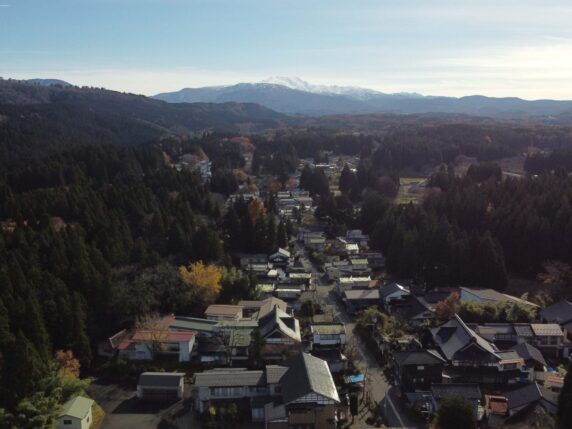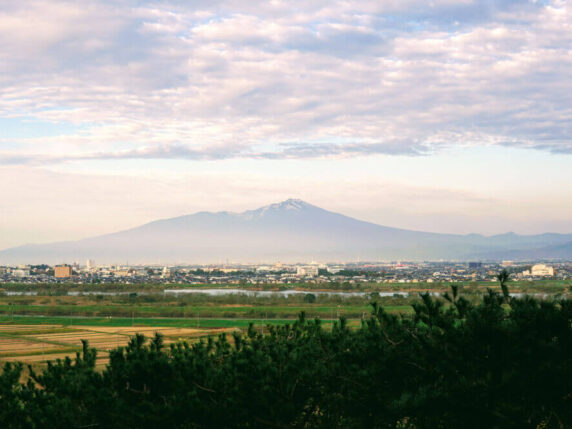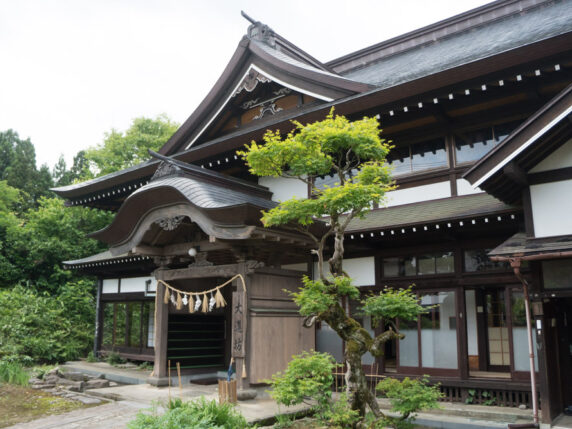Why You Simply Must Try Dewa Sanzan Shojin Ryori
Written by Timothy Bunting
Why You Simply Must Try Dewa Sanzan Shojin Ryori
If you’ve paid a visit to a Zen temple in Japan before, chances are you would have tried Shojin Ryori. Known for its almost exclusive use of local vegetables, zero waste policy, and unprecedented impact on Japanese cuisine, Shojin Ryori spread throughout Japan along with the rising popularity of Zen Buddhism in the 13th Century. For the Dewa Sanzan, however, while still Buddhist in nature, Shojin Ryori here has taken on a life of its own. So much so, it even helped Tsuruoka become designated as Japan’s first UNESCO-certified Creative City of Gastronomy in 2014. Adored by pilgrims, foodies, and tourists alike, here’s why you simply must try Dewa Sanzan Shojin Ryori.
The Dewa Sanzan Shojin Ryori Origin Story
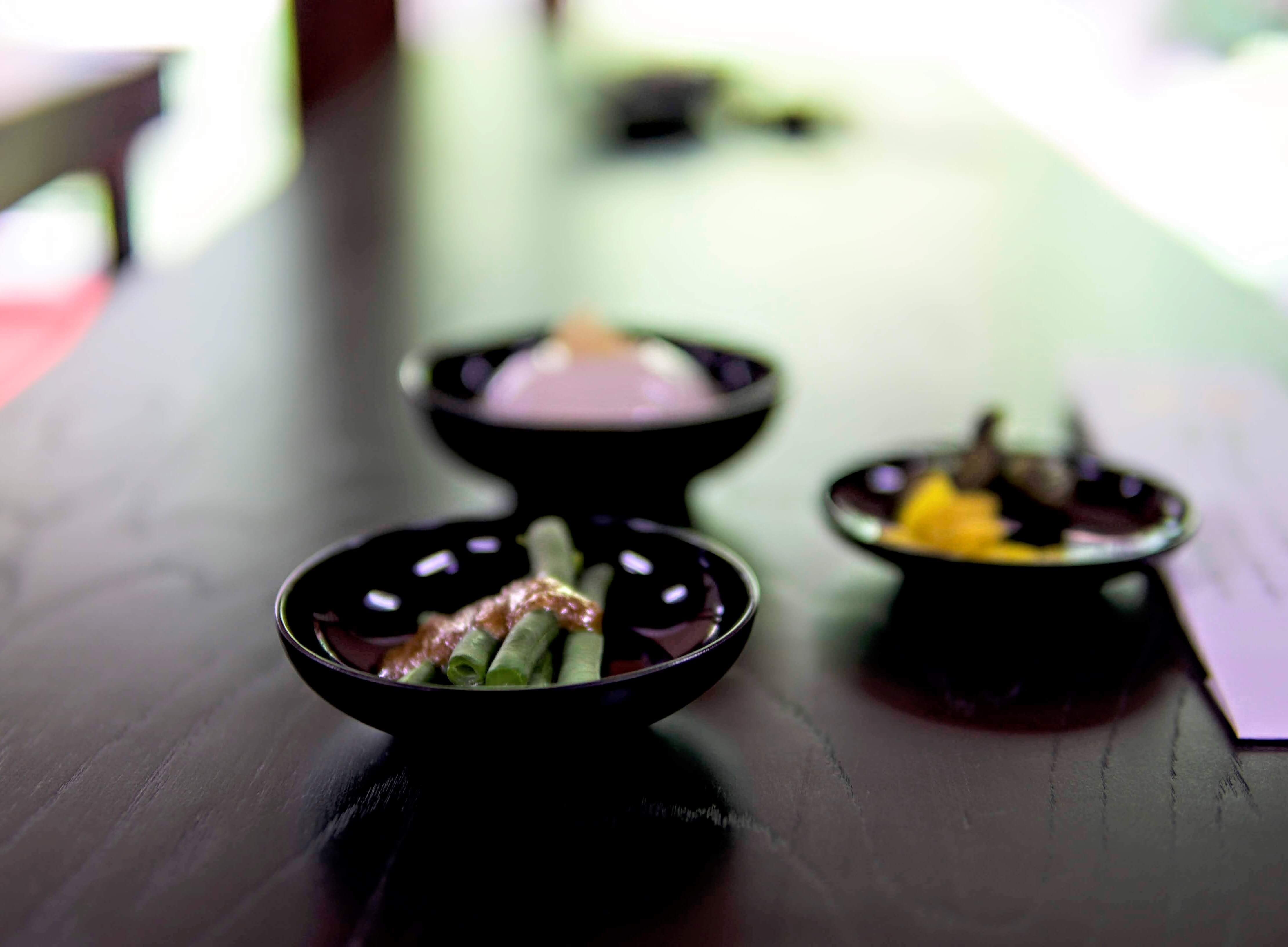
The word Shojin translated into English means ‘ascetic’, with Sho (精) meaning to refine or focus, and jin (進)meaning to progress. Shojin more accurately describes progressing in spiritual practice, or those who devote themselves to this spiritual practice. Ryori (料理)is simply the word for cuisine in Japanese, so in other words Shojin Ryori is cuisine for devotees.
For the Dewa Sanzan, however, Shojin Ryori originally developed when Yamabushi monks ate anything edible for survival during their rigorous trainings in the mountains. From nuts, to roots, grasses, bamboo shoots, flowers, and mushrooms, Yamabushi ate anything they could find. Yamabushi simply wanted to spend as much time as they could on the mountains, and before long they developed methods to preserve the mountain vegetables, such as salting, pickling, and sun-drying, allowing them to do just that. The meals that developed from these prolonged periods of time on the mountains are now on the plates of many visitors to the Dewa Sanzan.
Over time, hearing about the Yamabushi’s bizarre ability to become ‘reborn’, those making the pilgrimage to the Dewa Sanzan decided they would like to copy the diets of the Yamabushi. The meals prepared in temples on Mt. Haguro for centuries, such as Saikan, the former Kezoin Temple, made their way to the Shukubo Pilgrim Lodges at the base of the mountain, also giving pilgrims a chance of purification.
Dewa Sanzan Shojin Ryori’s Purifying Qualities
Shojin Ryori is a key component of purification rituals on the Dewa Sanzan. Traditionally, pilgrims go through a process named Shojin Kessai or ‘devotee purification’ before entering the mountains. During Shojin Kessai, devotees gather at their Shukubo Pilgrim Lodges, change into the white Shiroshozoku robes or a Hakui coat, put on their Shime necklace eat Shojin Ryori, and pray for a safe pilgrimage at the altar before heading out.
Shojin Ryori is traditionally based around the rule of five: five colours: green, yellow, red, black, and white; five flavours: sweet, sour, salty, bitter, and umami; five preparation methods: raw, stewed, boiled, roasted, and steamed; five elements: proper temperature, ingredients, portions, techniques, and heart; and the five senses: taste, sight, touch, smell, and sound.
The balance of the rule of five and also the vegetables used in Shojin Ryori are believed to provide the body with the nutrients it needs, and also to keep the body in balance with the seasons. For example, in the warmer months tomato or cucumber are used to cool the body down, and in winter root vegetables help keep the body warm. Not only that, but when you eat Shojin Ryori on the Dewa Sanzan, you are eating the gifts of the mountains while physically being on the mountains, meaning you receive double the energy.
The Ingredients

In truth, the meals the Yamabushi eat during training aren’t at all substantial, often containing only rice, miso soup and pickles. Instead Naorai, the celebratory meals eaten after a successful training are offered. Dishes from Naorai are generally offered at Saikan and in the Shukubo Pilgrim Lodges. If you prefer to have the training meals, just let the accommodation provider know in advance.
Zen Buddhism is largely centred around seated meditation, and the killing of animals is said to corrupt the spirit. This in turn interrupts meditation, so no meat or fish is typically used in Shojin Ryori. In addition, strong-smelling foods are also forbidden, such as onions or garlic. By no means does this make the food bland, however. Many ingredients are added to provide flavour such as konbu kelp for dashi (stock), soy sauce, sake (rice wine), mirin (sweet rice wine), vinegar and sesame oil. These flavours are used sparingly so as not to cover the natural flavours of the vegetables, but rather to bring them out.
Sansai (mountain vegetables and mushrooms) taken directly from the mountains form the basis of Dewa Sanzan Shojin Ryori. Mushrooms, bamboo, eggplants, green peppers, walnuts, chestnuts, sesame, and the more unique Japanese mugwort, ostrich fern, Japanese knotweed, butterbur, bracken shoots, chrysanthemum (yes, the flower), the Japanese herb named shiso, akamizu, zenmai, and udo all come together in an eclectic mix of flavours and textures using techniques developed over centuries on the Dewa Sanzan.
The Preparation and Preservation Methods
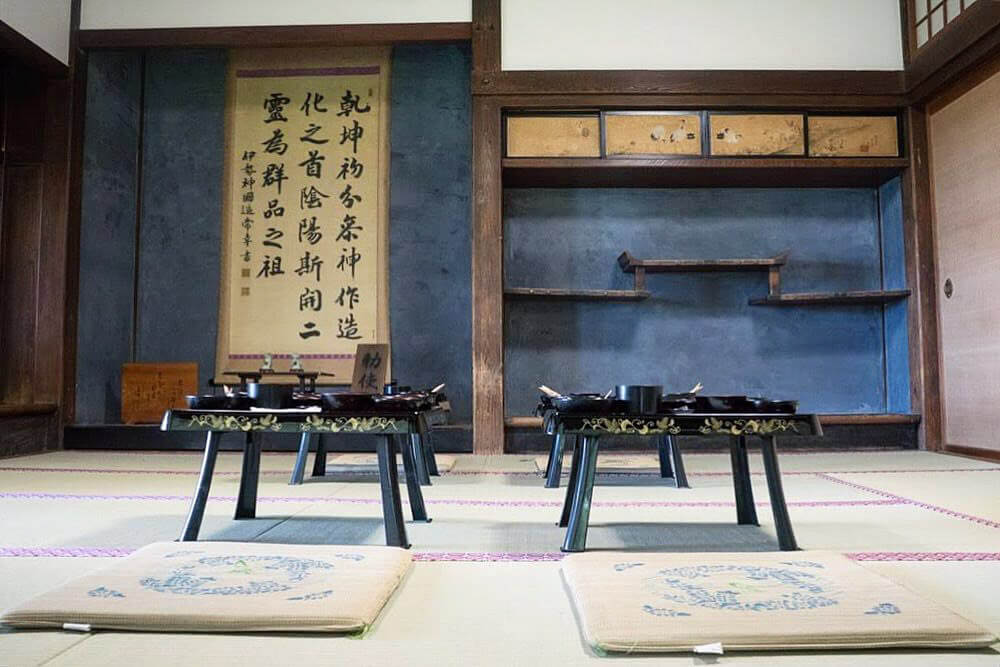
Dewa Sanzan Shojin Ryori is meticulously prepared. As some of the ingredients are taken directly from the mountains, chefs rely on centuries of accumulated knowledge to make sure every precious ingredient is well utilised. Those who make Shojin Ryori have to be careful to use everything they can and let nothing go to waste. Even carrot and radish peel are used, and leafy green vegetables are added as stock to provide flavour to soups.
Another unique point of Dewa Sanzan Shojin Ryori is the preservation methods employed. Sun-drying, pickling, and salting are all methods used to store foods for extended periods of time, but they also allow some of the plants to even be eaten in the first place. When raw, some ingredients are too bitter or too full of toxins to be eaten, but by preserving them in various ways the bitterness and toxins can be largely removed. In addition, the different preservation methods mean different flavours and textures can be experienced for the same vegetables.
Not only have the Shukubo Pilgrim Lodges been providing Shojin Ryori since their induction, the recipes have been lovingly passed down through the generations. Each Shukubo has its own take on famous dishes, the most famous of which is Goma Dofu (Sesame Tofu). Although it is not actually tofu, Sesame Tofu is the local specialty developed in the Dewa Sanzan. Chefs ground sesame, add starch to make it into a paste, leave it in a cool place to harden, then add a sweet viscous paste called 'an' to create the signature dish. More substantial dishes from Naorai are generally offered at Saikan and in the Shukubo, but if you prefer to have the training meals, that can also be arranged (send us an email below).
Non-Vegetarian Shojin Ryori
The rules for making Shojin Ryori generally hold true for Buddhists, but the Dewa Sanzan aren’t entirely Buddhist any more. While the Dewa Sanzan were a mixture of Buddhism, Shintoism and Haguro Shugendo, they were forcibly switched to Shintoism following a government ordinance in 1872 (besides a few temples on Mt. Haguro and Mt. Yudono).
In Shintoism, eating fish is perfectly acceptable, and fish is frequently gifted to the Kami gods. Saikan and other Shukubo Pilgrim Lodges at the base of Mt. Haguro often use Bonito flakes to create the dashi stock used for soups and other dishes, and it’s not uncommon to see a fish on your plate. Not only that, there is a type of pork called “Yamabushi Pork” that sometimes comes as a part of Shojin Ryori.
This is obviously unacceptable for pure Buddhists, and vegans and vegetarians would be disappointed, but this is not to say that they can’t make vegan or vegetarian versions of the meals, quite the opposite. It just means that you’re going to have to make a special request if you want vegan or vegetarian options.
Where can I get Dewa Sanzan Shojin Ryori?
It is also possible to stay at Saikan at the top of Mt. Haguro or in one of the Shukubo Pilgrim Lodges at the base, such as Daishinbo or Daishobo. Shukubo don’t typically cater for non-staying guests, however Saikan does offer different Shojin Ryori courses for lunch. You can book Shojin Ryori lunch in Saikan, even for those not staying. Lunch times are between 11am and 2pm.
Dewa Sanzan Shojin Ryori
So there you have it. If you want a unique culinary experience, you simply can't go past Dewa Sanzan Shojin Ryori. Not only is Dewa Sanzan Shojin Ryori healthy for you, it is purifying, and developed from centuries and centuries of Yamabushi exploring in the nearby mountains.
Timothy Bunting
Tim Bunting is a Dewa Sanzan Shrine Yamabushi with over 10 years' experience living beneath the three mystical peaks. He is a self-professed Dewa Sanzan nerd, and is currently working on the Yamabushido project and Dewa Sanzan Monzenmachi Project with Megurun Inc. His roles including assisting in Yamabushi trainings, translating, interpreting, and curating Dewasanzan.com.
Insider information and updates on
The Dewa Sanzan.
Subscribe to the Dewa Sanzan Tribe now.

